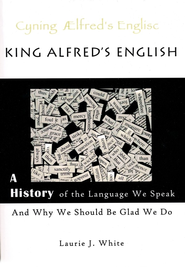One of your students has submitted a stellar report on a country, including a baked and painted salt-flour-water topography of a particular geographic feature. Another drags his feet and submits a writing assignment late.
You want to reward the one and motivate the other. What can you do?

What I expected
In my younger days I thought children should intrinsically try to do their best without expectations of a reward. They should do it for the internal joy of knowing that they had done the job well. They should learn to love it because they had to do it anyway. And then I had kids of my own.
What I learned
I learned that children need some positive reinforcement when they’ve done something well, and they enjoy something fun to aim for when they’re having trouble.
An adult may experience a warm, fuzzy feeling from completing a super job, but a child isn’t there yet. He occasionally needs something concrete. After reading how some classrooms handle rewards and motivation, I used “scholar dollars” for our own little classroom. It worked beautifully, so I’ll share it with you.
Motivate with scholar dollars
Design or get your students’ help on designing scholar dollars of different denominations.
We used the normal U.S. monetary units of $1, $5, $10, and $20 but created new designs for the money. Once you have created them, copy them off so you have lots of dollars available. Believe me, in a short time you are going to need them.
Decide what grades, projects, tests, or behaviors earn certain amounts of scholar dollars.
Reward good grades. An A could earn $10, a B $5, and a C $1. Reward work done early or on time. Reward good attitudes. Reward whatever you want to, but make sure that your scholars know ahead of time exactly what they can earn. They need to know how and what they are earning.
Buy an assortment of goodies that you know your kids will like—concrete motivation.
My scholar dollar box always had pens, pencils, small hair and jewelry items, stickers, gum, candy, and color markers. Make it cheap but interesting. Always be on the lookout for items on sale.
After we got the system up and running, I also added these almost-free items, printed on colorful paper: Skip a subject one day this week (prior approval for my planning purposes), Have a friend over this week, Call a friend and talk for 20 minutes, Thirty free minutes on a computer game, and Lunch out with the teacher (I liked that one!). You can make up your own rewards to suit your family.
Label the items in your scholar dollar box with prices.
A small pack of gum could be worth $30. That’s 3 A’s or 6 B’s or an awfully lot of C’s. A bracelet could be worth $50. A gift card to a favorite store could be worth $400. Set your prices according the item’s intrinsic value.
Open the scholar dollar box once a week for a few minutes and let your students buy their rewards.
Some will want to spend all their dollars each week; others might save up their rewards for the larger items. That’s great. They’re learning economics and delayed gratification.
Each Friday my kids eagerly anticipated the items their well-earned scholar dollars could buy for them. For our family, this system worked through junior high. After that, their tastes changed and became more expensive. I couldn’t afford their favorite music, and they weren’t happy with a pack of gum or a fancy pencil. But by then, they had learned that their good, hard work can earn rewards—sometimes the internal reward of a job well done.
And that was the whole point. Until our kids can learn to internalize their motivation and decide on their own reasons for doing well, they need a little bit of outside, positive help from us.
My husband still remembers the first ball glove he bought when he was a young boy. He bought it with the accumulated nickels he earned drying the dishes for his mother every night. That was one smart mom.
Yours for a more vibrant writing class,.










